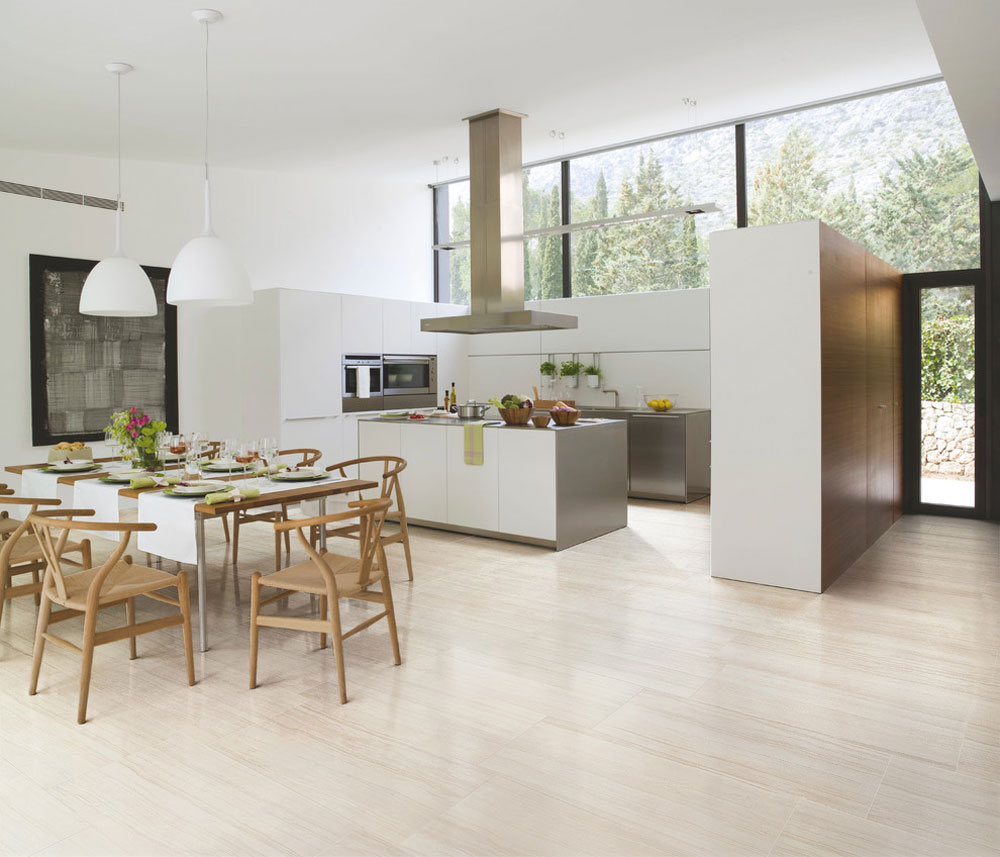Advertisement
Kitchen flooring options aren’t just that – they represent one detail that contributes to setting the ambient in your kitchen.
Its effect on the surrounding is impressive, as it displays your style and should go as a whole with the overall style of your home all while being practical.
Some popular choices associated with good flooring are Hardwood, Laminate, Ceramic and Vinyl.
Table of contents
- Types of flooring
- Think about how much you want to spend
- How active is your household?
- Something you can clean easily
- The Overall Design Style
- Your Material Match
Finding the right floor to satisfy your needs and enhance your kitchen is a challenging process so reading up on some modern kitchen flooring ideas and tips may help you think about it in a better manner.
Types of kitchen flooring
Ceramic tile flooring
Pros: It’s cheap, it’s appealing, easy-to-clean and it comes in huge varieties for all tastes.
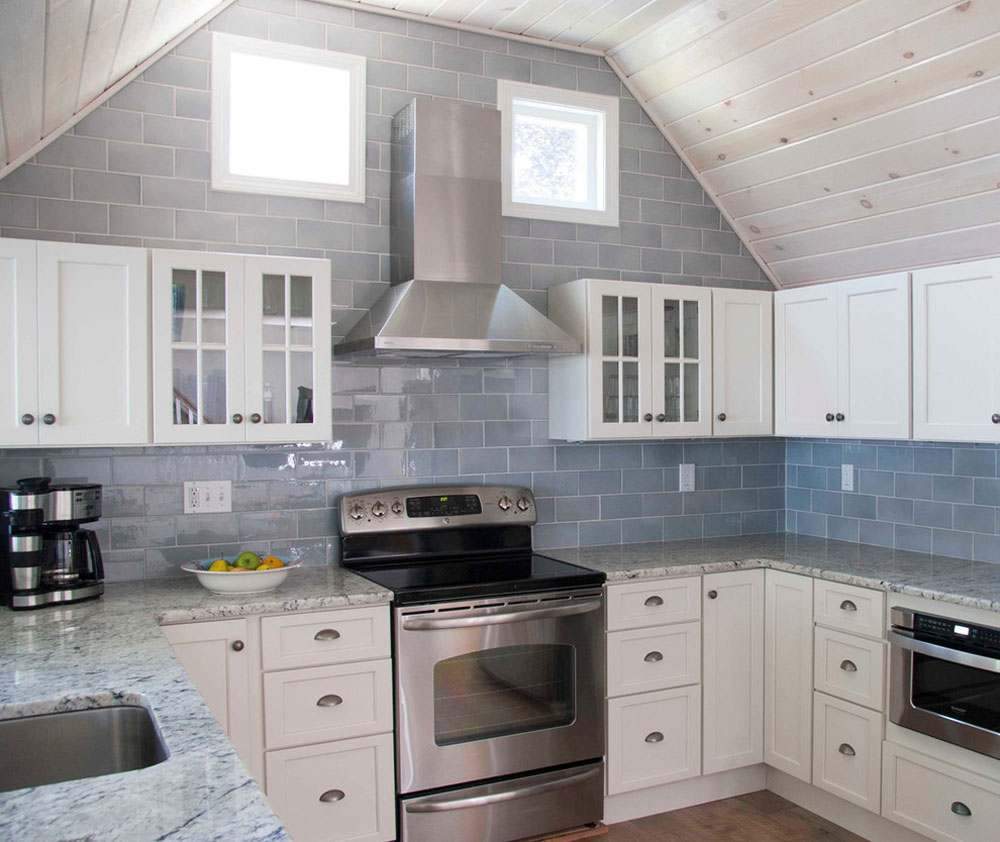 Image source: Judy Cook Interiors, LLC
Image source: Judy Cook Interiors, LLC
Cons: It’s a hard material so it’s not really a comfortable surface. Gets very slippery and grouts require frequent effort to clean.
Natural Stone flooring
Pros: It’s a classic look accompanied by a pleasant cool feeling, especially when hot. It’s easy to maintain and very resistant.
Cons: Expensive and requires installing by professionals. Slate, like other porous stones, needs seals to protect it, because its layers peel off with time and dirt gets in the crannies.
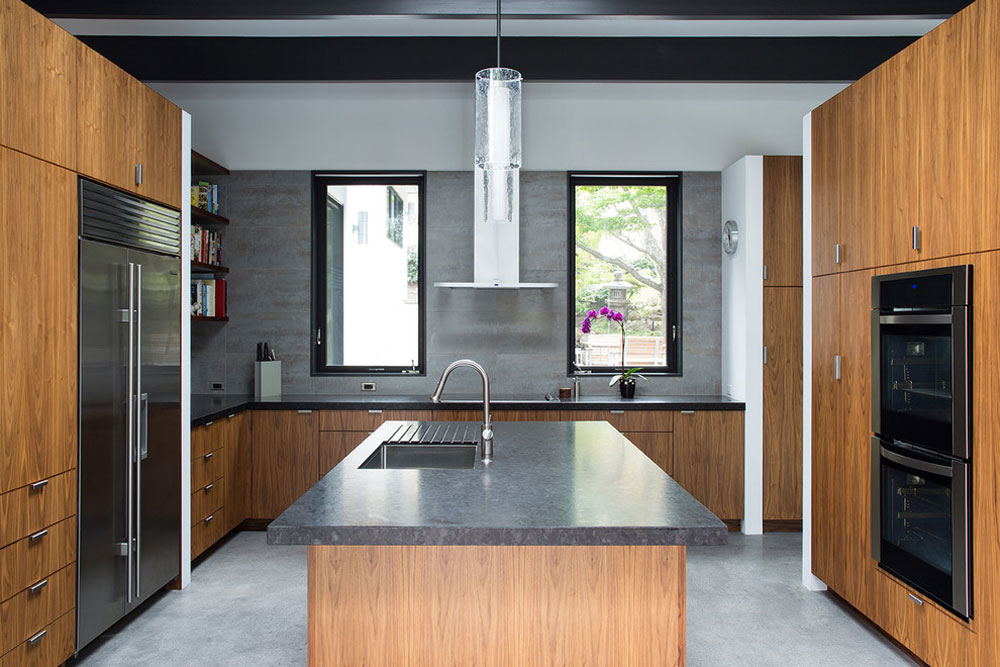 Image source: Klopf Architecture
Image source: Klopf Architecture
What is considered natural stone?
Natural stone is a material which comes from the earth. It includes products such as slate, marble, granite, travertine, sandstone, onyx, quartzite and soapstone. It has a natural beauty that adds an aesthetic element to any home. This is perhaps the reason that natural stone has been used throughout history as a building or decorative material.
How thick is a natural stone tile?
The thickness of the tile you use often depends on the style or stone you select. Mosaic tiles, for example, are often thinner than an average floor tile (which is normally between ½ and ¾ of an inch). Natural stone tiles, however, are often thicker than average. Floor tiles will be thicker than wall tiles.
How much is a stone tile?
Stone tiles are often calculated according to size and quality. However, you could expect to pay between $5 and $10 per square foot. In addition, stone tiling will be approximately $7 per square foot for installation.
Is natural stone cold?
Natural stone can be cold, although many people do elect to install under floor heating. If you live in a cold climate, you could also choose to place rugs over your stone tiles. Without under floor heating, however, your floors will be cold underfoot where they lay uncovered.
Porcelain flooring
Pros: Any harm done on the tile doesn’t show easily as it has color all the way through it.
Cons: Also a very hard material not so comfortable to stand on, with grouts that demand committed cleaning.
Is porcelain tile good for a kitchen floor?
Ceramic and porcelain tiles are both made of clay. However, porcelain tiles have sand added to the mixture for added strength. Before the tiles are fired, extra water is removed from the mixture in order to produce a dense tile. The tiles are then baked at higher temperature. The result is a strong tile which is less porous than a ceramic tile. As a result, porcelain tiles an excellent choice for kitchens, bathrooms and high traffic areas.
Do porcelain tiles scratch easily?
As porcelain tiles are fired at a higher temperature, they are incredibly strong. This means that they are less likely to scratch or crack than a regular ceramic tile. As the tiles are denser than regular ceramic tiles, they will be less likely to stain. Those spills or stains which are inevitable in a kitchen will be easily wiped away.
How durable is porcelain tile flooring?
The high firing temperature of porcelain combined with the dense clay used for production makes porcelain very strong. With the high firing rate used, and the low water content within the tile porcelain tiles are very unlikely to crack, even when used outside in freezing weather. Porcelain is more durable than ceramic tiles in high traffic areas and will be able to withstand a great deal of wear and tear.
Do porcelain tiles need to be sealed?
Porcelain tiles can be either plain or glazed. Most glazed tiles do not need to be sealed. However, unglazed tiles will benefit from a light seal. When sealing your tile, ensure you do this before grouting. This will help you to protect your tiles.
Hardwood flooring
Pros: Has an evergreen strong appeal that can heighten your design’s standards.
Cons: Easily damageable, known for not resisting any kind of moisture or liquid.
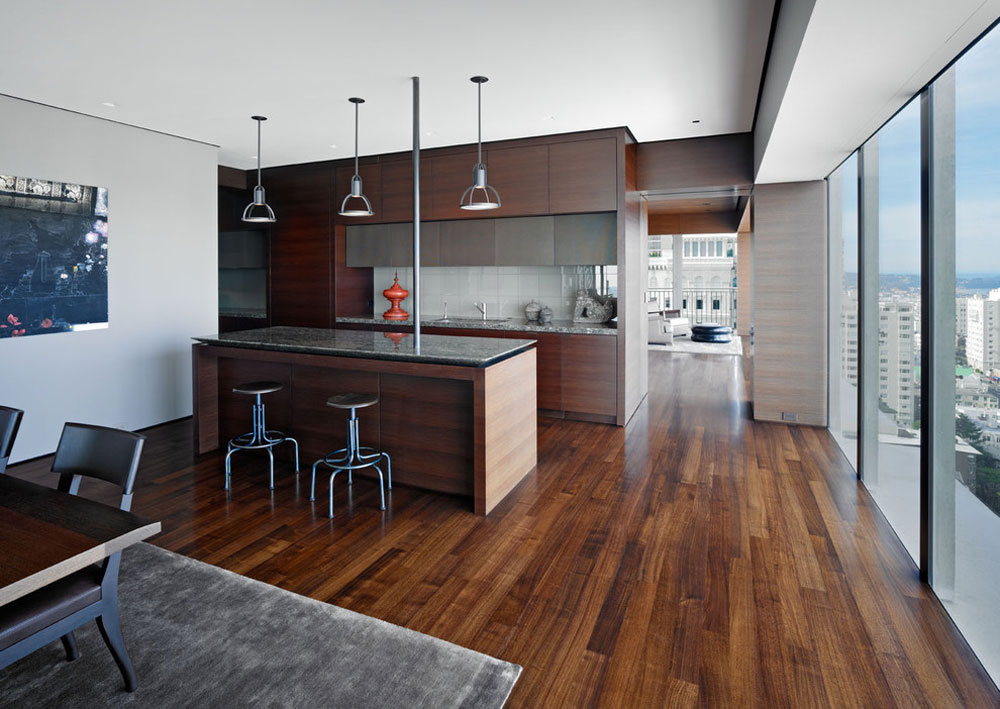 Image source: Zack | de Vito Architecture + Construction
Image source: Zack | de Vito Architecture + Construction
Is underlay required for hardwood flooring?
Underlay is very important when laying hardwoods, bamboo, engineered or laminate flooring. When you use underlay, any subtle imperfections within your hardwood floor will be evened out. Hardwood flooring can be noisy, and by using underlay, the amount of noise generated will be reduced. In addition, underlay will be able to cushion your floor, reduce moisture and insulate your floor, keeping in warmth.
What kind of wood is used in hardwood flooring?
Domestic woods which are native to the United States are used in hardwood flooring. This includes Maple, Red Oak, White Oak and Cherry. These woods may be used to blend or contrast with cabinets or furniture already present within a home, creating a warm atmosphere.
What underlayment should be used for hard floors?
A felt underlay is often used for hardwood floors. This underlay can be nailed or stapled down onto floors before hardwood is added. A 15lb felt underlay is recommended for hardwood or engineered floors.
Laminate flooring
Pros: Easy to install, with a little effort you can install it over another flooring. It’s relatively inexpensive and relatively more resistant than other tiles.
Cons: It distorts and warps by water. It cannot be refinished; it lasts for a short period compared to natural wood flooring or tile.
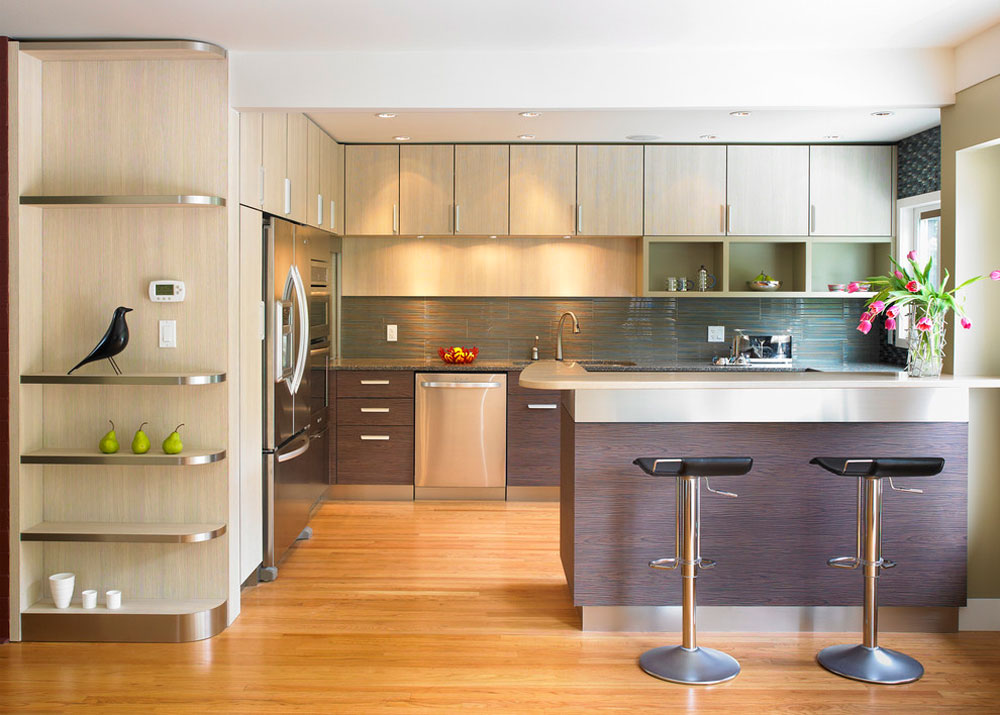 Image source: The Sky is the Limit Design
Image source: The Sky is the Limit Design
Is it a good idea to put laminate flooring in the kitchen?
Laminate flooring is a popular, budget friendly choice. Laminate flooring has an advantage over hardwood when it comes to water. However, sheet vinyl or luxury vinyl plank make the best kitchen choices. These have the appeal of laminate flooring but are 100% waterproof.
How many years does laminate flooring last?
The length of time a laminate floor will last depends largely on the quality of the product, how well it was installed and how much traffic it gets. Laminate flooring can last anywhere between 10 and 30 years. However, the average lifespan of a laminate wood floor is between 15 and 25 years.
How water resistant is laminate wood flooring?
Although it has an advantage over a hardwood floor when it comes to water, laminate flooring still has a high wood content. This makes it unsuitable for bathrooms or basements. If you enjoy the appeal of a laminate floor, waterproof laminate will provide a suitable option. This is a product made entirely of plastic. Installed in damp or wet areas, it will not warp or damage.
How thick of laminate flooring should I use?
The thickness of your flooring will depend on your budget. Laminate flooring comes with 4 different thickness measurements. The thinner the floor, the more cost effective it is. The thicker the floor, the higher the cost will be. Most laminate floor planks come in 8mm, 10mm and 12 mm thickness options.
Is 8mm laminate flooring good?
8mm simply measures the depth of the flooring. This will affect the price, but doesn’t reflect the durability of the flooring. The durability measure is known as the AC rating. The higher the AC rating on a laminate floor, the more durable it will be.
Vinyl flooring
Pros: Available in many different colors, they are easy to install and shape yourself. Vinyl tiles combine style with practicality by being resistant, strong and easy to maintain.
Cons: The PVC that is used while manufacturing is known to excrete VOC, especially in the beginning of use. Vinyl floors scratch easily, so be careful.
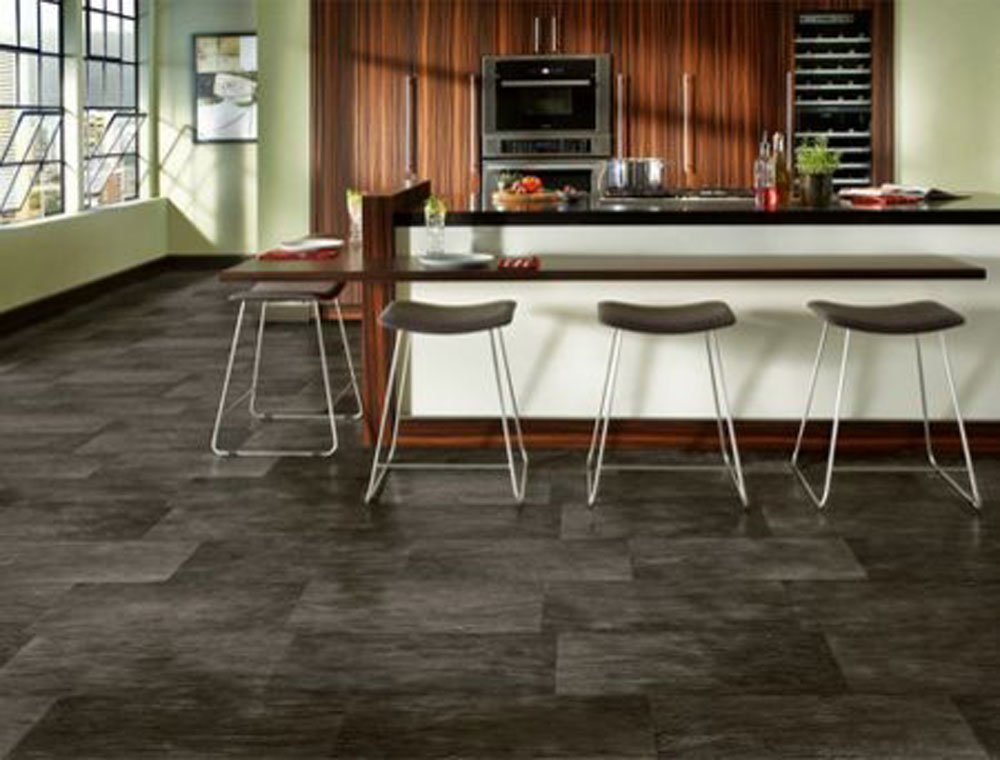 Image source: Interiors and Textiles
Image source: Interiors and Textiles
How long do vinyl floors last?
Vinyl flooring is often an affordable choice when compared to linoleum. However, vinyl floors are not as durable as linoleum floors. The average lifespan of a vinyl floor is anywhere between 10 – 20 years. This is worth considering if you are looking for durable flooring.
Is vinyl flooring good for a kitchen?
Vinyl flooring is often highly suitable for a kitchen as it is very easy to maintain. When you install vinyl flooring, you won’t need to worry about spills, heavy objects or water splashes. The durability of your floor will depend on the quality of your initial product. However, your floor will be super easy to maintain.
Do I need an underlay for vinyl?
If your floor surface is smooth, you shouldn’t need an underlay for your vinyl floor. A well cushioned floor should be more than adequate on its own.
Cork flooring
Pros: Comfortable, flexible and can soften a fall of an item, preventing it breaking. Its prone to absorb warmth and sound, giving it a full and rich feeling. The suberin it contains is resistant to mold, mildew, rot and pests.
Cons: Except for fading over time, cork doesn’t hold up as well without TLC. It can be easily damaged by dirt, so vacuuming and sweeping and resealing is mandatory to care for it. Scars are hard to fix, especially the bigger ones.
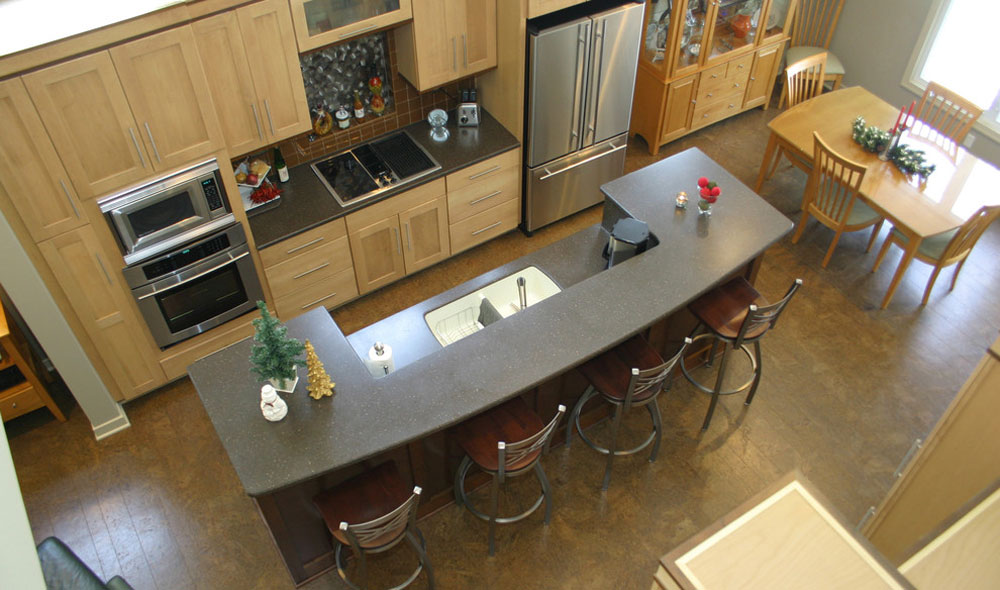 Image source: Rivershores Hardwood Flooring
Image source: Rivershores Hardwood Flooring
What are the benefits of cork flooring?
Cork flooring insulates and adds warmth to a room. In addition, cork provides a spongy surface which cushions your floors. The result is a room which is acoustically pleasing, warm and aesthetic. Cork tiles come in a range of different shapes and sizes, from planks to tiles, adding aesthetic freedom.
Is cork flooring expensive?
No, cork is a very inexpensive material to use. Although the exact price will depend on the colour choice you select, cork tiling can begin at as little as $1.10 per square foot. It can increase to $7.25 however. Installation is inexpensive, at approximately $1 per square foot.
Can you get a cork floor wet?
If you have glued down cork tiles, you can get your floor wet. Cork does not absorb water and is resistant to mould, so will not be damaged by spills or splashes. However, if you use a floating floor, which is not glued down, and which has a wooden base, water damage could occur. Floating flooring is therefore not suitable for areas such as bathrooms.
Is cork flooring durable?
Yes. Cork is soft and pliable, which makes it immune to chipping, cracking and scuffing. As a result, cork has been used in high traffic areas or public settings such as libraries or court houses. It will not suffer the same wear and tear as a harder surface.
Can you paint a cork floor?
Cork can be painted, but it needs to be well prepared first. As it is porous, cork will need to be primed first. Primer will give your paint a surface to adhere to.
The texture within cork will also need to be filled with shellac before painting begins. This will even out the surface. Once this preparation has taken place, you can begin to paint with a latex based product. Painting cork often gives it new life.
Concrete flooring
Pros: It goes well with a subfloor, so you can always change it. Concrete’s resistance is impressive, nothing can ruin it, and it keeps its cool which makes it practical for warm climates.
Cons: Not very comfortable as it’s relatively hard. Standing on it isn’t so good for a longer period of time and dropping things on it could end tragically. Concrete needs sealing every three to nine months.
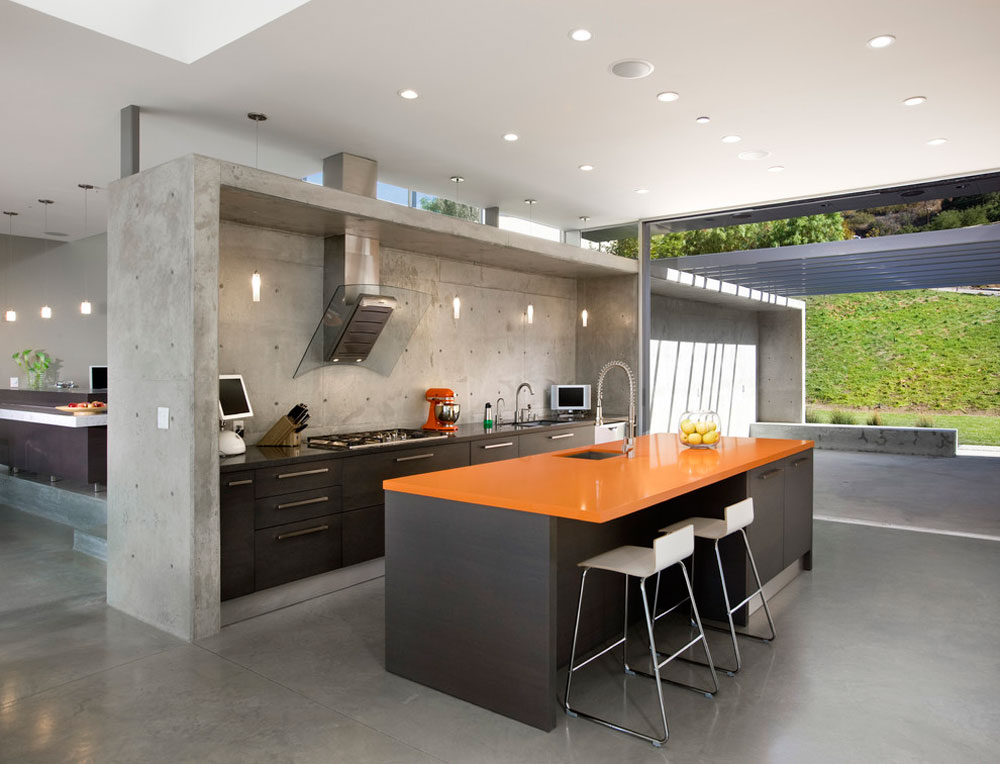 Image source: Abramson Teiger Architects
Image source: Abramson Teiger Architects
Is concrete flooring expensive?
Concrete flooring is very inexpensive. If you have a concrete slab, you can have it polished for as little as $2 – $6 per square foot. Polishing concrete can give it a luxurious sheen, and any cracks or discolorations will add a natural, stone-like feel.
Is concrete flooring cold?
Concrete flooring can be cold, but no more so than ceramic or stone flooring. If concrete flooring is properly sealed, it will not retain damp. It also helps to ensure that your surface is properly drained before laying your concrete floor. When properly constructed, a concrete floor does not have to be cold.
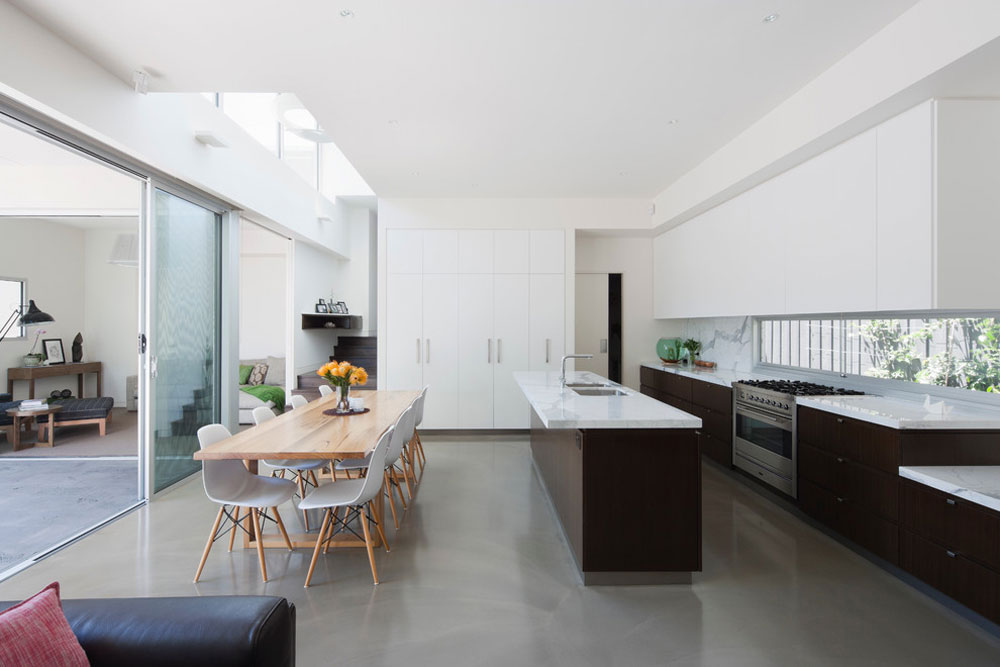 Image source: Luke Stanley Architects
Image source: Luke Stanley Architects
How much does it cost to get polished concrete floors?
As shared earlier, polishing can be very inexpensive ($2 a square foot). This will give your concrete a luxurious sheen. If you spend a little more ($5-$8) you will be able to add designs such as scouring or colour pigments, creating an attractive yet natural looking concrete floor.
Linoleum flooring
Pros: You can find it in every color that fits your idea because it comes in most shapes, sizes and patterns. Easy to shape and cut, linoleum is inexpensive and it’s easy to take care of because of its strength.
Cons: Linoleum tends to fade over time. Even though a coating is included to keep the material protected, without it there, waxing and polishing are needed to care for the floor. Linoleum is hard to install, so you’d better call a professional to help you rather than doing it yourself.
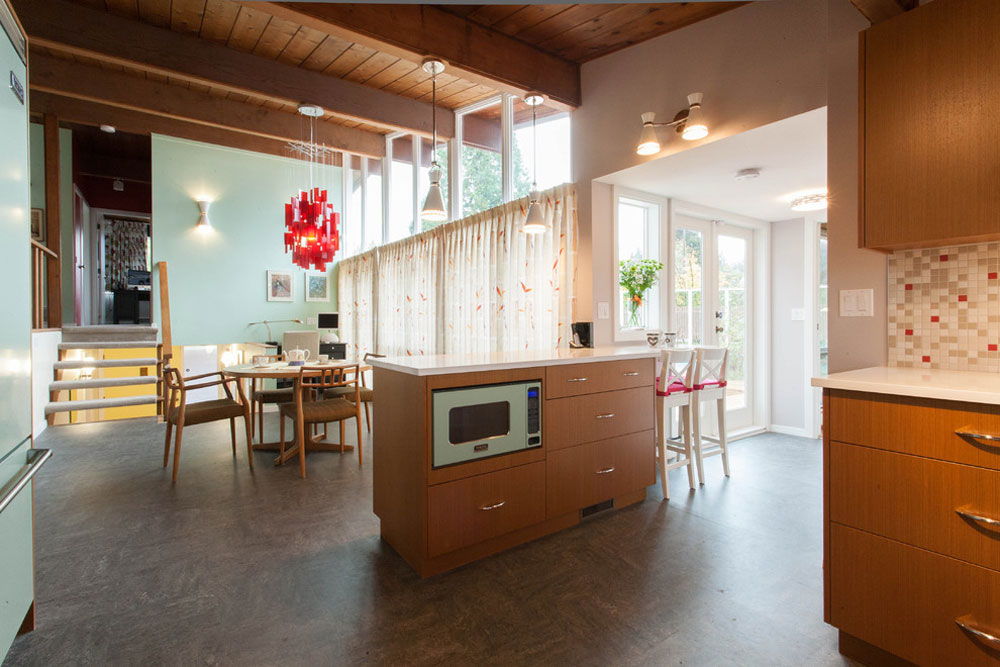 Image source: Kenorah Design + Build
Image source: Kenorah Design + Build
What is a linoleum floor?
Linoleum (or lino, as it is more commonly known) is flooring made of natural materials such as linseed oil, cork dust, pine resin and wood floor. Burlap or canvas is often added in. Lino is often used in kitchens and bathrooms as it is easy to clean and soft and warm underfoot.
Is vinyl flooring the same as linoleum?
No. Vinyl is made of artificial materials such as plastics, which contain toxins. PVC is commonly used to create vinyl flooring. Both lino and vinyl can be installed as tiles or sheets. In the long run, linoleum will be far more durable, giving it a longer lifespan.
How much does it cost to install linoleum flooring?
Linoleum varies in price, depending on the quality. While a basic linoleum floor range between 50c to $2 per square foot, luxury linoleum will cost anywhere between $2.50 to $5.00 and top of the range products cost up to $8.00. At these high prices, linoleum becomes expensive and can be placed in a similar price bracket to hardwood flooring.
Think about how much you want to spend
There is a very vast variety of options when choosing kitchen flooring, kitchen tile and vinyl being the most common cheap ones and custom designed ceramic tiles being a more expensive option. It’s nice to already imagine how good some tiles would look like, but a little bit of calculating will better help you with your vision.
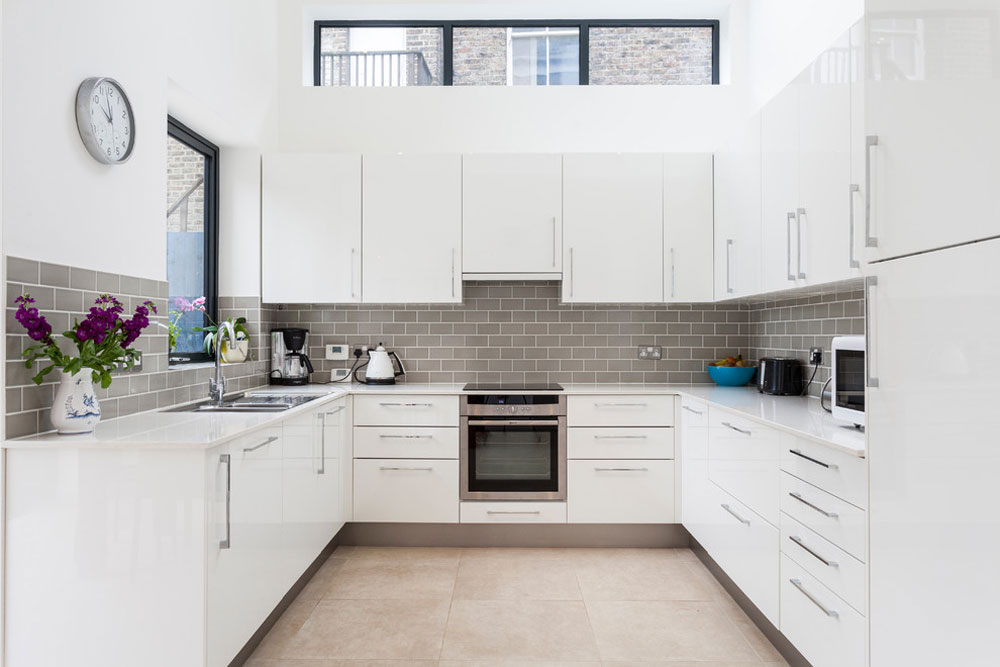 Image source: Design Squared Ltd
Image source: Design Squared Ltd
You will need to know how much of the product will be needed for your kitchen, so you should probably ask for help and advice from the employees at a tile or home improvement store.
How active is your household?
Long-lasting is the word you need to look for if your kitchen is the kind that is frequently used and visited. This is good to keep in mind when thinking about all the aspects of choosing your flooring, but this influences how often you would have to change or improve it.
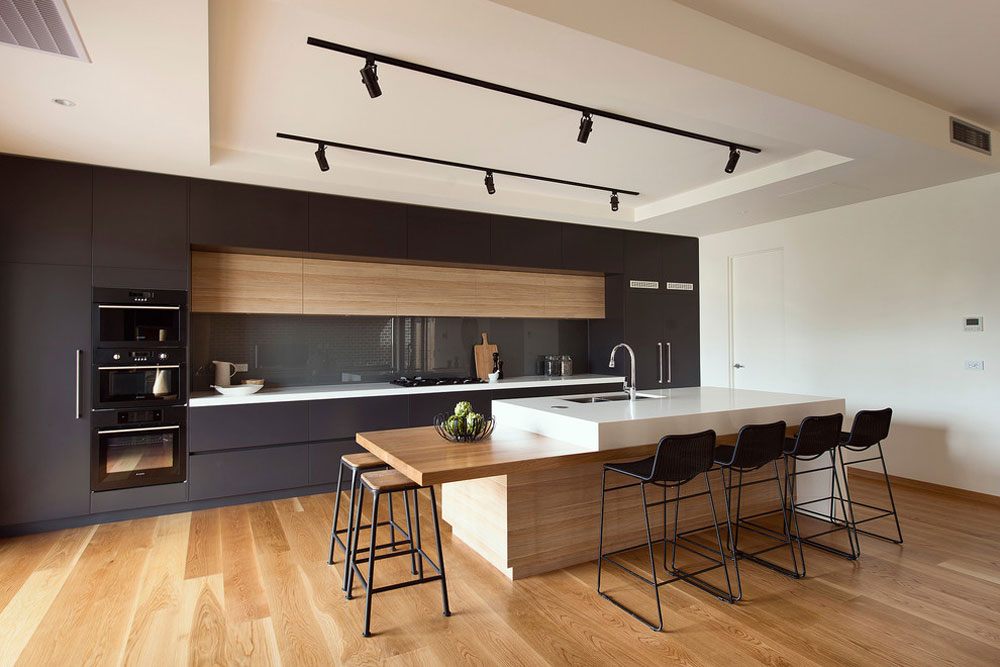 Image source: R.Z.Owens Constructions
Image source: R.Z.Owens Constructions
In recent times, the kitchen is where all the cooking, homework, gatherings and debates occur, so consider an option like ceramic or porcelain tiles that posses the kind of strength you would need for this area.
Something you can clean easily
A common phenomenon of the kitchen, spills and stains (especially in a house where there are children or pets), are a real obstacle of keeping your space clean. Choosing a floor that makes the annoying cleaning routine easier allows a simple and fast way to take care of the look and hygiene in the kitchen.
 Image source: todd hamilton
Image source: todd hamilton
Vinyl Flooring, for example, can be cleaned just by sweeping it, vacuuming it daily or just giving it a good weekly mopping, and it also gets rid of the grout line problem.
The Overall Design Style
What are you ideas on the looks of it? Do you want to decorate it with a fun vibe, or maybe something more warm and country? Like all rooms, kitchens come with a certain theme, so the flooring also plays a part in this purpose. If you want to achieve a Country French feeling, hand-scraped hardwood flooring is considered best as light-colored ceramic tiles are known for being modern and stylish.
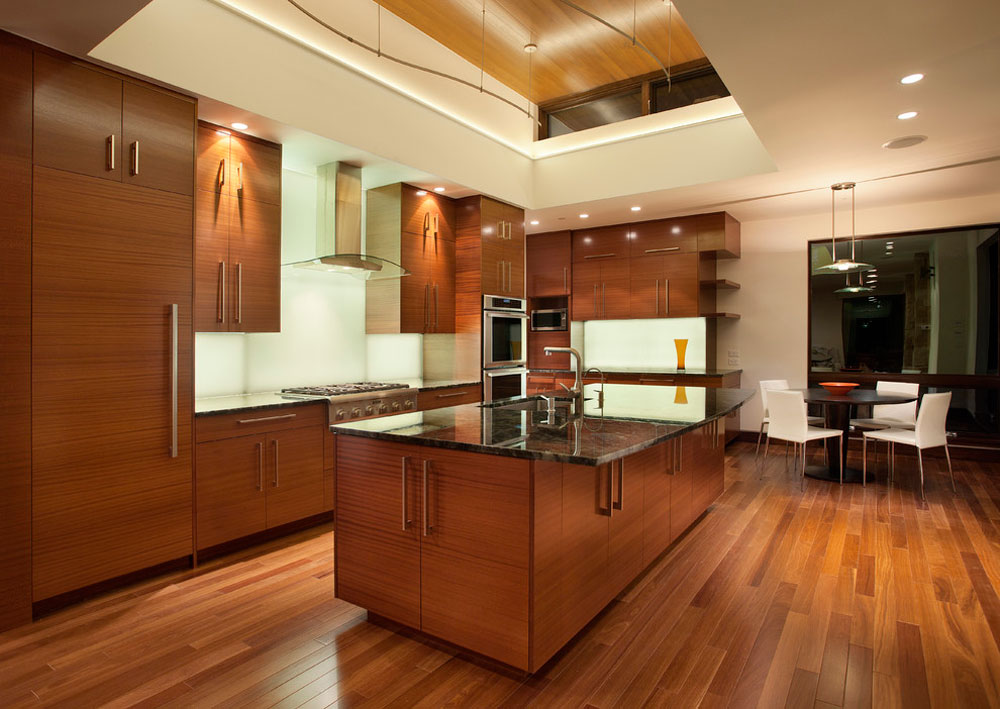 Image source: Mosaic Architects Boulder
Image source: Mosaic Architects Boulder
Your Material Match
Kitchen flooring options pros and cons need to be considered and checked out so you can objectively choose the right flooring for yourself. Below are some of the most popular products on the market today.
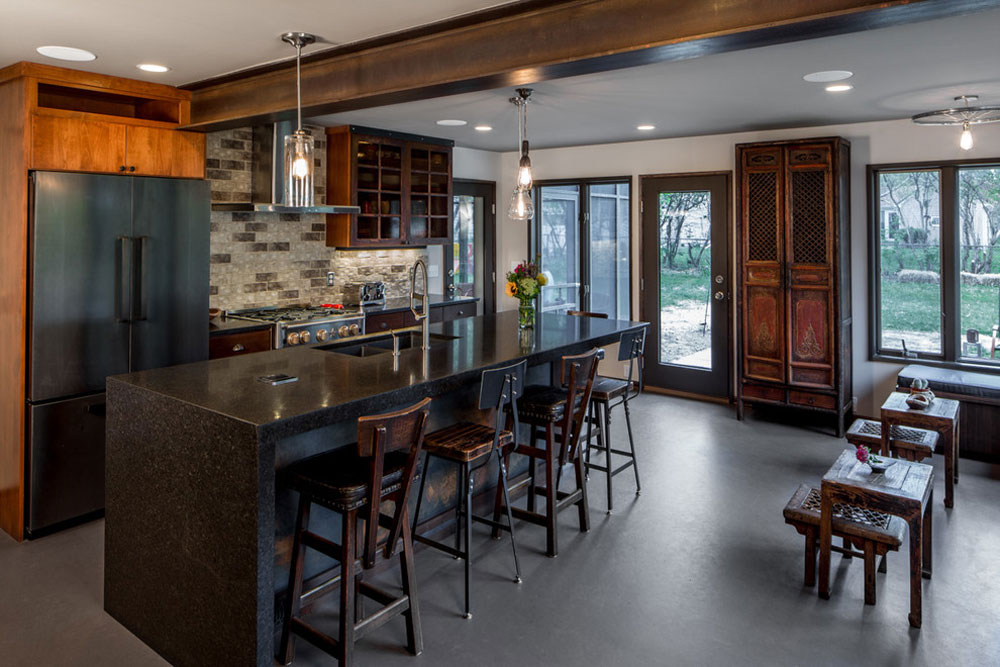 Image source: Bluestem Remodeling
Image source: Bluestem Remodeling
Ending thoughts on kitchen flooring
Lasting and resistance are definitely factors to keep in mind when choosing a flooring material for your kitchen, because of course the spills and the stains are just part of the activities in it.
The surfaces needs to be hard and cool, giving your family the flexibility and stability it needs while being immune to the weather. Don’t undermine the importance of having a pleasant and practical surface to cook, converse and perform other activities in.

